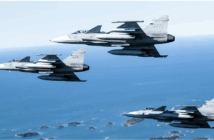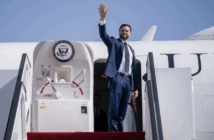Welcome to the CavasShips Podcast with Christopher P. Cavas and Chris Servello…a weekly podcast looking at naval and maritime events and issues of the day – in the US, across the seas and around the world.
This week…US forces again are headed to Haiti to try and help in the aftermath of another devastating earthquake. We talk with a veteran of several humanitarian assistance/disaster relief missions to try and get a handle on what’s involved. And with the US withdrawal from most combat missions in the mideast what might that mean for the huge naval presence that’s been maintained for over 40 years? We’ll take a look.
In this Week’s Squawk Chris Servello comments on the withdrawal from Afghanistan.
Please send us feedback by DM’ing @CavsShips or @CSSProvision or you can email chriscavas@gmail.com or cservello@defaeroreport.com .
This Week’s Naval Round Up:
The US withdrawal from Afghanistan and in particular the Kabul airport continued throughout the week. The joint operation includes Marines from the 24th Marine Expeditionary Unit deployed on the Iwo Jima amphibious ready group as well as Carrier Air Wing Five aircraft from the USS Ronald Reagan performing overflight missions over the airport and the vicinity of Kabul..
An array of US military forces are in Haiti or headed to the earthquake-stricken nation to provide humanitarian assistance and disaster relief. More than 2,100 people are known dead and thousands hurt and homeless after a 7.2-magnitude earthquake hit on August 14. The amphibious transport dock USS ARLINGTON left Norfolk August 17 carrying US Marines, helicopters and landing craft to help in the assessment of damage in Haiti. The fast expeditionary transport BURLINGTON and at least seven Coast Guard cutters have been assigned to Joint Task Force Haiti, joined by a growing number of US military and government agencies under the overall direction of the US Agency for International Development.
On August 18 the decommissioned frigate INGRAHAM was sunk in mid-Pacific by a combination of weapons as part of the Large Scale Exercise. A coordinated strike on the ship involved Harpoon missiles launched by the submarine CHICAGO, Joint Direct Attack Munitions dropped by aircraft from the carrier CARL VINSON, and Naval Strike Missiles fired by a land-based launched on Barking Sands, Hawaii. Hopefully more details will emerge of this cplex exercise, which appears to have coordinated multiple weapon launches from a disparate group of platforms timed to strike simultaneously. The INGRAHAM was the last of 51 Oliver Hazard Perry-class frigates built for the US Navy in the 1970s and 1980s. She was decommissioned in 2014 after a 25-year career.
The US destroyer CURTIS WILBUR left Japan on Aug. 18 to return to the United States after 25 years of being forward-deployed to Japan. The ship left two days after the arrival of the destroyers HIGGINS and HOWARD to shift from the US West Coast to Japan. CURTIS WILBUR, one of the oldest destroyers in the US fleet, will undergo an overhaul at San Diego before returning to service.
The British Royal Navy is swapping its mine ships based at Bahrain. BROCKLESBY will be relieved by MIDDLETON, SHOREHAM will be relieved by BANGOR. BROCKLESBY and SHOREHAM left Bahrain on August 20 after completing 3-year tours in the Persian Gulf.
An August 20 Tass news agency report said a Russian defense industry source indicated the damaged aircraft carrier ADMIRAL KUZNETSOV will enter a newly-built floating drydock in the summer of 2022 to complete an overhaul that began in 2017 at Murmansk. The carrier was damaged when the floating drydock it was in sank in October 2018 as the ship was being refloated. The ship was damaged further in December 2019 by a major fire. Lacking another drydock able to handle Russia’s only aircraft carrier, the ship has languished, waiting for a replacement dock to be completed.
China continued to press Taiwan by holding a series of live-fire naval exercises August 17 off the southwest and southeast coast of the island nation, closely watched by Taiwanese forces. Chinese media said the exercises were aimed at deterring US forces from operating in the area. The US Navy has maintained a roughly once-a-month routine of sending warships through the Taiwan Strait between Taiwan and the Chinese mainland.
SQUAWK BOX – Chris Servello
For many Americans, especially those in the veteran community…this week’s Afghanistan policy actions, press briefings and Saigon-like images from Kabul have been hard to stomach. It’s difficult to watch our great country stumble and have to come to grips with the geopolitical, military and social realities of the last two decades in Afghanistan.
It’s also hard to imagine what 9-11 remembrance ceremonies will look and feel like given the events of the last week. Suddenly parades, speeches and football games seem much less consequential…assuming they ever were.
I am not a boots on the ground veteran of the war in Afghanistan…the closest I came was shooting airplanes off the deck of the Theodore Roosevelt in ‘01 and ‘02…and touring the green zone or well protected Forward Operating Bases with flag officers as they visited Sailors…so the emotion I feel about the last twenty years is different than someone who fought in country.
While emotions are raw, it’s probably not of much value to draw sweeping conclusions on what our exit says about the service of those who fought or what it means to our standing in the world…the reality is we didn’t achieve all of our objectives and are leaving in a less than ideal fashion so some sort of regret or disappointment is probably warranted. Arguing to the contrary seems hamfisted and out of touch.
That said, as leaders, as navalists…as Americans…we need to take a hard look at the last twenty years and figure out what we did right and what we did wrong…where we made stupid decisions and poor investments to ensure we are better prepared for the faster, more dangerous and likely more consequential chapters that lie immediately ahead.




